An Interview with Eric Filion
The Montreal Chinatown Project
by Jim McGee
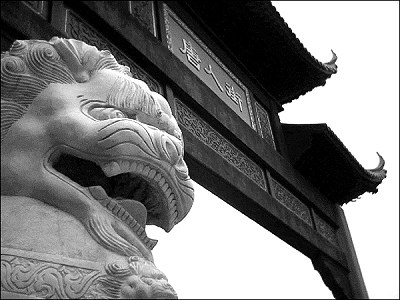 Those of you who've been with us a while
know that we're big on the idea of self assignments. They keep you fresh
as a photographer, get you out of creative ruts, and often lead in
unexpected directions. Those of you who've been with us a while
know that we're big on the idea of self assignments. They keep you fresh
as a photographer, get you out of creative ruts, and often lead in
unexpected directions.
In Montreal, a little over a year ago, Eric Filion quit his job and
decided to take on an ambitions self-assignment. He would choose 52
subjects in Montreal's Chinatown and shoot them over a period of one year.
The project would capture everyday items that are part of the fabric of
life in Chinatown; it would capture a moment in time. It would require
creativity and dedication, and in some ways it would turn out to be a very
different task than the one he thought he was starting.
Eric is not a professional photographer. Before starting the project he
was a Team Leader at a large interactive media company in Montreal. Today,
as the project winds down, he says he is much happier than he ever was in
his old job. Surprisingly there seems to be little or no apprehension in
his voice when he says he has no idea what comes next.
His choice of camera is interesting as well. He used an HP Jornada
Pocket Camera and an HP Jornada 500 Series Pocket PC. Not exactly what
you'd expect for a project this ambitious.
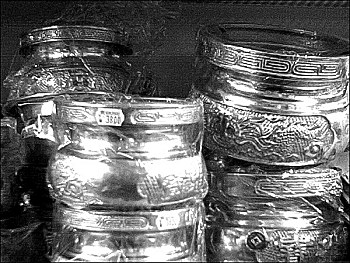 When you look at the collection you find a variety of images, some
artistic, some documentary, and some just mundane everyday items. Taken
together they cover a broad swath of life in Chinatown. Eric plans to
donate the images to the city of Montreal. Today there are few historic
images of Montreal's Chinatown. Years from now these images will provide a
glimpse of what life was like in this community. Ironically it may be
those mundane everyday images that capture the imagination 50 years hence
even more than the artistic ones. When you look at the collection you find a variety of images, some
artistic, some documentary, and some just mundane everyday items. Taken
together they cover a broad swath of life in Chinatown. Eric plans to
donate the images to the city of Montreal. Today there are few historic
images of Montreal's Chinatown. Years from now these images will provide a
glimpse of what life was like in this community. Ironically it may be
those mundane everyday images that capture the imagination 50 years hence
even more than the artistic ones.
What inspired you to start this project?
The inspiration was quite far away, a few years ago, I had in my mind
a one year photography project. I've been going to Chinatown for 20 years.
The place and the people are really great but also a challenge.
Why did you choose Chinatown as your subject?
I travel a lot in Asia. Chinatown is the only place in Montreal that I
really feel at home, that I feel I can relax, that I can close my eyes and
I'm somewhere else. Every day there is something to discover in Chinatown
it can be food, the people, a new business. It's a society moving very
fast.
There is a tendency to think of Chinatown as a city within a city.
As an outsider how were you viewed?
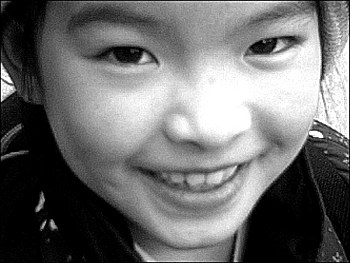 I approached the project a few different ways. Sometimes I would buy some
food, or tell people I'm a tourist from New York and ask "can take
some pictures of your store". That was a really easy approach the
first few times. Of course there are a lot of tourists in Chinatown.
I approached the project a few different ways. Sometimes I would buy some
food, or tell people I'm a tourist from New York and ask "can take
some pictures of your store". That was a really easy approach the
first few times. Of course there are a lot of tourists in Chinatown.
Some subjects were more difficult and sometimes I had to explain my
project to people. They didn't really understand what I was doing and why.
For the Chinese taking pictures means taking pictures of your family. They
don't understand why you would want to take a picture of a god or an
orange and that made them suspicious of what I was doing. Teenagers and
children were more fun.
It was too difficult to hide my pocket pc and camera so I photographed
in the open. If I was seen trying to hide the camera I got some very
strong reactions. They assumed I was an inspector from the city.
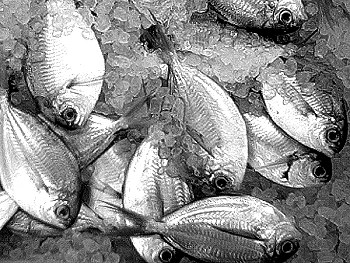 I never could get pictures inside the Chinese pharmacology. I wanted to
take pictures of the herbs. The owners would get very upset. I was once on
a street in Taiwan called snake alley. You can't take a picture of a snake
there because it takes the magic out of the snake. If I tried to take a
picture inside a Chinese pharmacology people would get really angry and I
think it was the same thing. I never could get pictures inside the Chinese pharmacology. I wanted to
take pictures of the herbs. The owners would get very upset. I was once on
a street in Taiwan called snake alley. You can't take a picture of a snake
there because it takes the magic out of the snake. If I tried to take a
picture inside a Chinese pharmacology people would get really angry and I
think it was the same thing.
I'm not fearless. I prefer to respect people and get their cooperation
with smiles and communication. It was very difficult sometimes. People in
Chinatown are very careful about people from the city who might be
checking up on the restaurants the food and the people. It's a very closed
city, a closed society, and I also had this weird technology - the pocket
PC.
Did you ever feel threatened?
A few times I was followed by this gang - the Chinese dragon. I got to be
well known but I was a little worried. I know a little about these people,
they're not violent people. But when you see somebody around you for a few
hours. You wonder what's going on here.
I had the same experience in China and Taiwan. When there's a stranger
around everyone notices. It's not easy to have a voice with Asian people.
They may say yes but they're thinking about no. It can be a very, very
closed society to outsiders.
Did you start with a specific plan of what you wanted to shoot or
did a plan evolve as you worked?
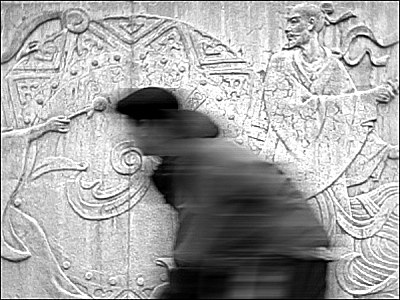 It depends every week was different. When I started I had a list of
subjects in my mind that I wanted to shoot. So I created a small text file
for a reference for all the subjects I wanted to shoot and I had a lot of
rejects. I discovered what worked was to take a subject every week and
work that subject. That way I was focused. When there is too much in your
mind you can't focus. If my subject this week is vegetables I just focused
on vegetables and was sure to get a good image
It depends every week was different. When I started I had a list of
subjects in my mind that I wanted to shoot. So I created a small text file
for a reference for all the subjects I wanted to shoot and I had a lot of
rejects. I discovered what worked was to take a subject every week and
work that subject. That way I was focused. When there is too much in your
mind you can't focus. If my subject this week is vegetables I just focused
on vegetables and was sure to get a good image
Michelangelo said that "In the stone is a beautiful statue. I just
remove the excess marble."
It's like that for a photographer. The perfect picture is there. It's
our job to find it. That something magic when you say "Wow that one
is perfect!" Sometimes you can shoot a hundred pictures that aren't
quite right somehow before you find that one.
Was there ever a point where you just felt stuck?
Like there was nothing left in Chinatown to shoot? Never, it was difficult
but I never felt like there was nothing else to shoot. I found most of my
subjects in one month. That part went fast because I know Chinatown so
well.
Why black and white when Chinatown is such a colorful place?
Doing the project in black and white had the advantage of keeping in my
mind on a kind of a "visual structure". The use of b/w became
the "glue" that tied all these pictures together. It was a way
to create a new image from dozen of different pieces of a thousand
different puzzles. I don't think that the color would have achieved this
global vision.
I've always seen the world in black and white. Color is just chaos for
me.
Do you consider the project to be done or will you continue
to work on it?
I have no more subjects now (laughing) it would be quite impossible to
find another 52 subjects. (sighing) I'm tired. I need to step back and
take a break for a month or two. Then starts the work of publishing.
How do you plan to exhibit your work?
My plan is to do some exhibition here in Montreal. I'm just now thinking
about how I'm going to do this. How do I place these hundreds of pictures?
I don't' want to just show a few pictures and say that's it. I want to
show the whole body of work. I'm also thinking of publication but that is
a long way off. A lot of Chinese opened their hearts and spirit to me. I
want to show them their life. I want to give back to Chinatown what I've
taken. A gallery would be interesting but it would be cold. And I want to
exhibit in a center place the Chinese can smoke.
Have you gotten any feedback from Chinatown residents who've seen
your work?
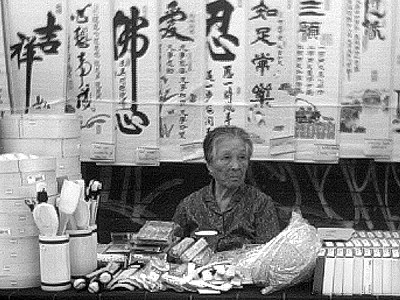 A little but not much (laughing) they think it's a waste of time.
A little but not much (laughing) they think it's a waste of time.
"Why are you doing this?"
"Yes its interesting but why take pictures of a vegetable or why
pictures of a god?"
In Asia most pictures are of family. It's rare to see pictures of a
temple without people.
I like the Chinese people, I like when they smoke and talk and relax
and enjoy themselves. They are cool people. Historically these people
suffered a lot. It was hard emigrating to Canada.
Is there anything you would have done differently?
No nothing.
What kind of camera did you use for the project?
It was an HP Jornada
Pocket Camera made for an HP Jornada 500 Series Pocket PC. It's a tiny
small camera that takes Compactflash that can go into the pocket PC.
That's an unusual choice.
I saw a movie Till the end of the world.
In the movie a guy had a digital phone that could send pictures through a
digital satellite. My dream was to have something like that. At the time
Blue Tooth technology was just starting. Some day you'll be able to send
photos around the world a Pocket PC. A year ago this was really like
experimental technology now it's common.
Today when you travel you send post cards and tell people what it was
like. In the future you'll have a videophone and you'll be able to send
video directly to them.
Quitting your job to undertake a project like this is pretty
unusual. How did your family and friends react?
My wife was OK about it. I was a team leader at a big interactive company
in Montreal and I was near a nervous breakdown. I was thinking "I
have to quit this job and go back into what I like". The only thing
in my mind for years was this project. This one year project.
It was the perfect timing for me. My wife said, "If you're happy
with this project and can be reborn - then just do it".
It was a great way to go back to what I had put away in my mind for so
many years working in technology. It was a good way to step back and be
grounded again.
My friends thought I would never finish the project. They were really
happy that I did.
How do you feel now that the end is in sight?
I'm very proud of this project. I finished this month. It was a challenge;
one year in your life is a lot. It was one year that every week I had to
go out and take pictures - even this winter at minus 30 degrees. There
were times I wanted to say "Just forget it, I'll go next week."
But I disciplined myself. That was the key.
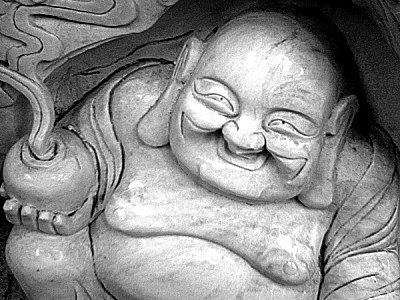 I don't know what's next to tell you the truth. I've worked in design
printing. I've worked in interactive media. I wasn't happy. I'm happy
taking pictures. This is what I love. So I don't know what's next. As long
as I can do my art I'll be happy. My life is pretty basic and I'm happy. I don't know what's next to tell you the truth. I've worked in design
printing. I've worked in interactive media. I wasn't happy. I'm happy
taking pictures. This is what I love. So I don't know what's next. As long
as I can do my art I'll be happy. My life is pretty basic and I'm happy.
I have other projects in my mind. But the next few weeks will be
getting the last few weeks' images together. I also have stories to go
with many of the images. That will all need to be added to the Web site.
The Chinese in here have a long history but the people of Montreal have
forgotten it. I tried to find some old pictures and there's not a lot to
find. A lot of old buildings are gone. Now at least we have 365 pictures
of Chinatown.
I'm giving a copy to the city. I hope it will be archived somewhere.
Chinatown is always changing. It's a fluid place.
 Subscribe to
Vivid Light
Subscribe to
Vivid Light
Photography by email
Tell
Us What You Think
|
